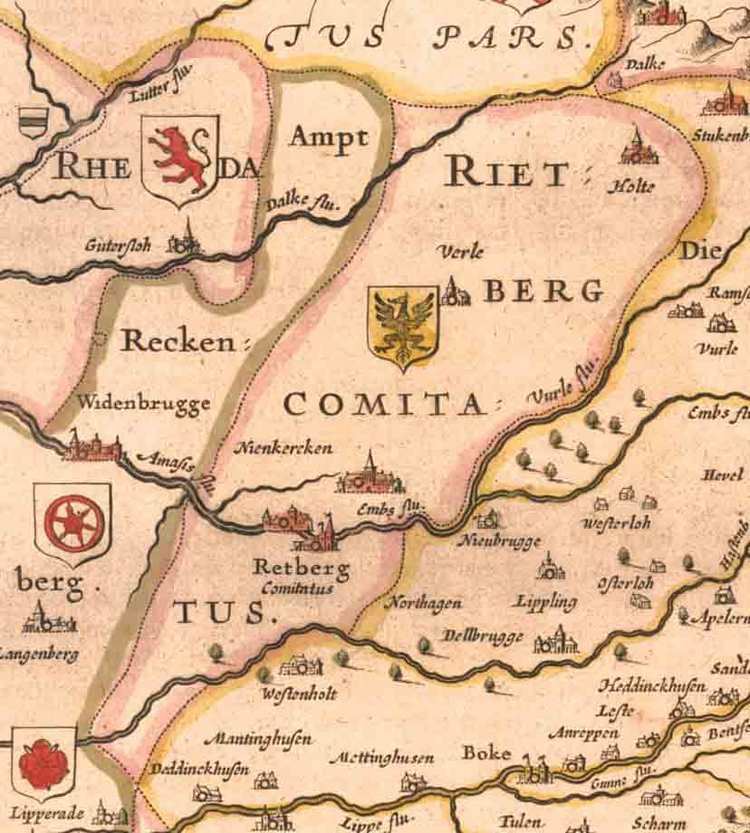Founded 1237 | Government Principality Preceded by Succeeded by Date dissolved 1807 | |
 | ||
The County of Rietberg (German: Grafschaft Rietberg) was a state of the Holy Roman Empire, located in the present German state of North Rhine-Westphalia. It was situated on the upper Ems in Westphalia between the Prince-Bishopric of Paderborn and the Prince-Bishopric of Münster. It existed as an independent territory from 1237 to 1807, when it was mediatised to the Kingdom of Westphalia.
History
Rietberg was first mentioned as 'Rietbike' around the year 1100. This name refers to Ried which is an old name for reed and to 'Bach', which means creek. There was a castle that dated back to the 11th century. From 1237, it was home to the family of Wenzel Adam von Kaunitz, Count Rietberg. From this time on, the part 'Berg' in the name Rietberg refers to the existence of a castle which is called 'Burg' in German. Since that time, Rietberg was an independent German territory until the year 1807. In the Middle Ages, the Rietberg county was a very small state. Nevertheless, Rietberg had its own militia, its own currency, and its own laws. Even foreign policy, on a small scale, was conducted independently. Until the 17th century, Rietberg coined its own money.
In the year 1807, Rietberg became mediatised to the Kingdom of Westphalia. The title Count Rietberg remains extant in the House of Liechtenstein, with Hans-Adam II, Prince of Liechtenstein and each born member of his dynasty and their dynastic wives bearing the title currently.
